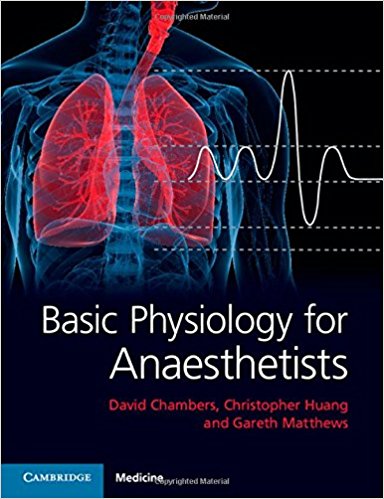

Most ebook files are in PDF format, so you can easily read them using various software such as Foxit Reader or directly on the Google Chrome browser.
Some ebook files are released by publishers in other formats such as .awz, .mobi, .epub, .fb2, etc. You may need to install specific software to read these formats on mobile/PC, such as Calibre.
Please read the tutorial at this link. https://ebooknice.com/page/post?id=faq
We offer FREE conversion to the popular formats you request; however, this may take some time. Therefore, right after payment, please email us, and we will try to provide the service as quickly as possible.
For some exceptional file formats or broken links (if any), please refrain from opening any disputes. Instead, email us first, and we will try to assist within a maximum of 6 hours.
EbookNice Team

Status:
Available4.4
40 reviews
ISBN 10: 1107637821
ISBN 13: 9781107637825
Author: David Chambers, Christopher Huang, Gareth Matthews
Every trainee in anaesthesia requires a thorough understanding of basic physiology and its application to clinical practice. This comprehensively illustrated textbook bridges the gap between medical school and reference scientific texts. It covers the physiology requirements of the Primary FRCA examination syllabus. Chapters are organised by organ system, with particular emphasis given to the respiratory, cardiovascular and nervous systems. The practical question-and-answer format helps the reader prepare for the oral examination, while 'clinical relevance' boxes translate the physiological concepts to clinical practice. The authors include two medical physiologists and a Specialty Registrar in anaesthesia, and thereby bring a unique blend of expertise. This ensures that the book is up-to-date, accessible, and pitched appropriately for the trainee anaesthetist. Packed with easily understood, up-to-date and clinically relevant material, this convenient volume provides an essential 'one-stop' resource in physiology for junior anaesthetists.
Section 1 The basics
1. General organization of the body
2. Cell components and function
3. Genetics
4. The cell membrane
5. Enzymes
Section 2 Respiratory physiology
6. Lung anatomy and function
7. Oxygen transport
8. Carbon dioxide transport
9. Alveolar diffusion
10. Ventilation and dead space
11. Static lung volumes
12. Spirometry
13. Hypoxia and shunts
14. Ventilation–perfusion relationships
15. West zones
16. Oxygen delivery and demand
17. Alveolar gas equation
18. Oxygen cascade
19. Lung compliance
20. Work of breathing
21. Control of ventilation
22. Pulmonary circulation
23. Oxygen toxicity
24. Ventilatory failure
25. Anaesthesia and the lung
Section 3 Cardiovascular physiology
26. Cardiac anatomy and function
27. Cardiac cycle
28. Cardiac output and its measurement
29. Starling’s law and cardiac dysfunction
30. Pressure–volume loops
31. Systemic circulation
32. Arterial system
33. Arterial pressure waveforms
34. Capillaries and endothelium
35. Venous system
36. Venous pressure waveforms
37. Lymphatics
38. Cardiovascular reflexes
39. Valsalva manoeuvre
40. Exercise physiology
Section 4 Neurophysiology
41. Neuronal structure and function
42. The brain
43. Cerebrospinal fluid
44. Blood–brain barrier
45. Cerebral blood flow
46. Intracranial pressure and head injury
47. The spinal cord
48. Resting membrane potential
49. Nerve action potential and propagation
50. Synapses and the neuromuscular junction
51. Skeletal muscle
52. Muscle spindles and Golgi tendon organs
53. Smooth muscle
54. Cardiac muscle
55. The electrocardiogram
56. Autonomic nervous system
57. Pain physiology
Section 5 Gastrointestinal tract
58. Saliva, oesophagus and swallowing
59. Stomach and vomiting
60. Gastrointestinal digestion and absorption
61. Liver anatomy and blood supply
62. Liver function
Section 6 Kidney and body fluids
63. Renal function, anatomy and blood flow
64. Renal filtration and reabsorption
65. Renal regulation of water and electrolyte balance
66. Acid–base physiology
Section 7 Blood and immune system
67. Haemostasis
68. Transfusion
69. Anaemia and polycythaemia
70. Immune system
71. Plasma constituents
Section 8 Energy balance
72. Metabolism
73. Starvation
74. Stress response
Section 9 Endocrine physiology
75. Hypothalamus and pituitary
76. Thyroid, parathyroid and adrenal
Section 10 Developmental physiology
77. Maternal physiology during pregnancy
78. Fetal physiology
79. Paediatric physiology
80. Physiology of ageing
Section 11 Environmental physiology
81. Altitude
82. Diving
83. Temperature regulation
basic physiology for anaesthetists ebook
basic physiology for anaesthetists 2nd edition
what are the 5 basic principles of anatomy and physiology
basic essentials a comprehensive review for the anesthesiology basic exam
basic anatomy and physiology notes pdf
basic anesthesiology
Tags: David Chambers, Christopher Huang, Gareth Matthews, Physiology, Anaesthetists